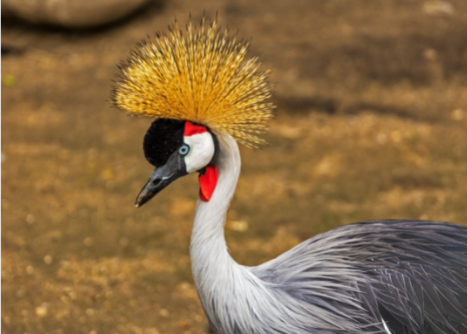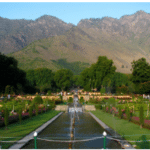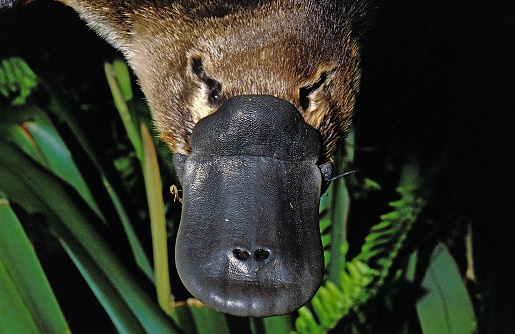- Tanzania’s Grey Crowned Crane is the national bird of Tanzania and is an endangered species. The exotic bird is in the Red listed category of the endangered species. It means that the population of the species is continuously reducing. Issues like loss of habitat, illegal poaching, and removal of the eggs of the bird have listed it as the red endangered species.
- Grey-crowned crane is on the red endangered species list as its population is reducing for the last 45 years. The global population of the grey-crowned crane reduced drastically from 100,000 birds in 1985 to 50,000-64,000 birds in 2004. It shows around 50% decline in the population justifying the bird’s categorization as the red endangered species.
- It is high time that Tanzania should take measures to preserve its national bird and remove grey crowned cranes from the list of red endangered species.
Scientific classification of Grey Crowned Crane
- Kingdom: Animalia
- Phylum: Chordata
- Class: Aves
- Order: Gruiformes
- Family: Gruidae
- Genus: Balearica
- Species: B. regulorum
- Scientific name: Balearica regulorum
Some facts about Tanzania’s National Bird
- A grey-crowned crane is Tanzania’s national bird.[Tanzania’s] It also goes by golden-crowned crane, African crowned crane, East African crane, South African crane, and Crested crane.
- The endangered species can be found across eastern and southern Africa. Countries like Rwanda, Congo, Kenya, Uganda, Tanzania, Mozambique, Zimbabwe, and South Africa are home to a grey-crowned crane.
- The population of endangered birds across Uganda, Kenya, Namibia, and Zimbabwe is rapidly declining. Currently, the population of grey-crowned cranes is around 26,500-33,500.
- The endangered bird does not migrate and survives on the local supplies only. Their seasonal or local movements are based on the availability of food, rainfall, and nest sites.
- The national bird of Tanzania inhabits the wetlands like the riverbanks, marshes, open riverine woodland, and temporary pools.[Tanzania’s]
- The endangered birds feed on seeds, pulses, grains, and grass tips. Their breeding sites are the sedges and uprooted grasses on a circular platform surrounded by tall vegetation.
Red listing of Grey Crowned Crane
- The endangered species – the grey-crowned crane is at greater risk due to the loss of its habitat. Their usual habitat such as the wetlands and marshes is used for cultivation, irrigation, and other human-related purposes.
- The phenomenon leads to overgrazing and the usage of pesticides on crops. Such kinds of activities lead to loss of habitat and the pesticides are harmful to the national birds as well.[Tanzania’s]
- Again Tanzania and other countries like Uganda, Kenya, and others, indulge in illegal captive trading of the grey crowned crane.
- We humans are exploding and encroaching on the lands and habitats of birds and animals. So endangered species like the grey crowned crane are forced to live adjacent to human settlements. It enhances the vulnerability of the endangered bird due to higher instances of hunting, poaching, and removal of their eggs.[Tanzania’s]
- Poisoning is also a crucial factor that kills the grey-crowned crane. Since the endangered bird feeds on the agricultural farmlands, the farmers to protect their crops poisons seeds and leave those for the birds to feed.
- There are also instances of electrocution of the farmlands to stop sorts of trespassing. Countries like South Africa and Uganda have recorded several such instances. The grey-crowned crane was electrocuted while entering farmland either for food or breeding.
Conservation of the red-listed endangered bird – Grey Crowned Crane
- The threats to the endangered bird led the International Union for Conservation of Nature (IUCN) to red-list the grey-crowned crane. It shows the highest level of risk of getting extinct for the endangered bird while their numbers dwindled from 100,000 in 1985 to 26,500-33,500 currently.[Tanzania’s] It led competent authorities like the Tanzanian government to rave the conservation process of the national bird.
- It is in terms of restoring the wetlands and raising awareness among the community to preserve the endangered species. On a positive note, the community is realizing the significance of ecology and taking effective measures to preserve the national bird. It’s our responsibility to protect the legacy of our forefathers and preserve the endangered species for future generations.[Tanzania’s]
Internal links:
Do you know about gorgeous of Pulicat Lake Bird Sanctuary? lets know
External links:
Tags:
birdsOther Articles
Next
February 15, 2022
Nishat garden – Erakina
Previous
February 15, 2022









